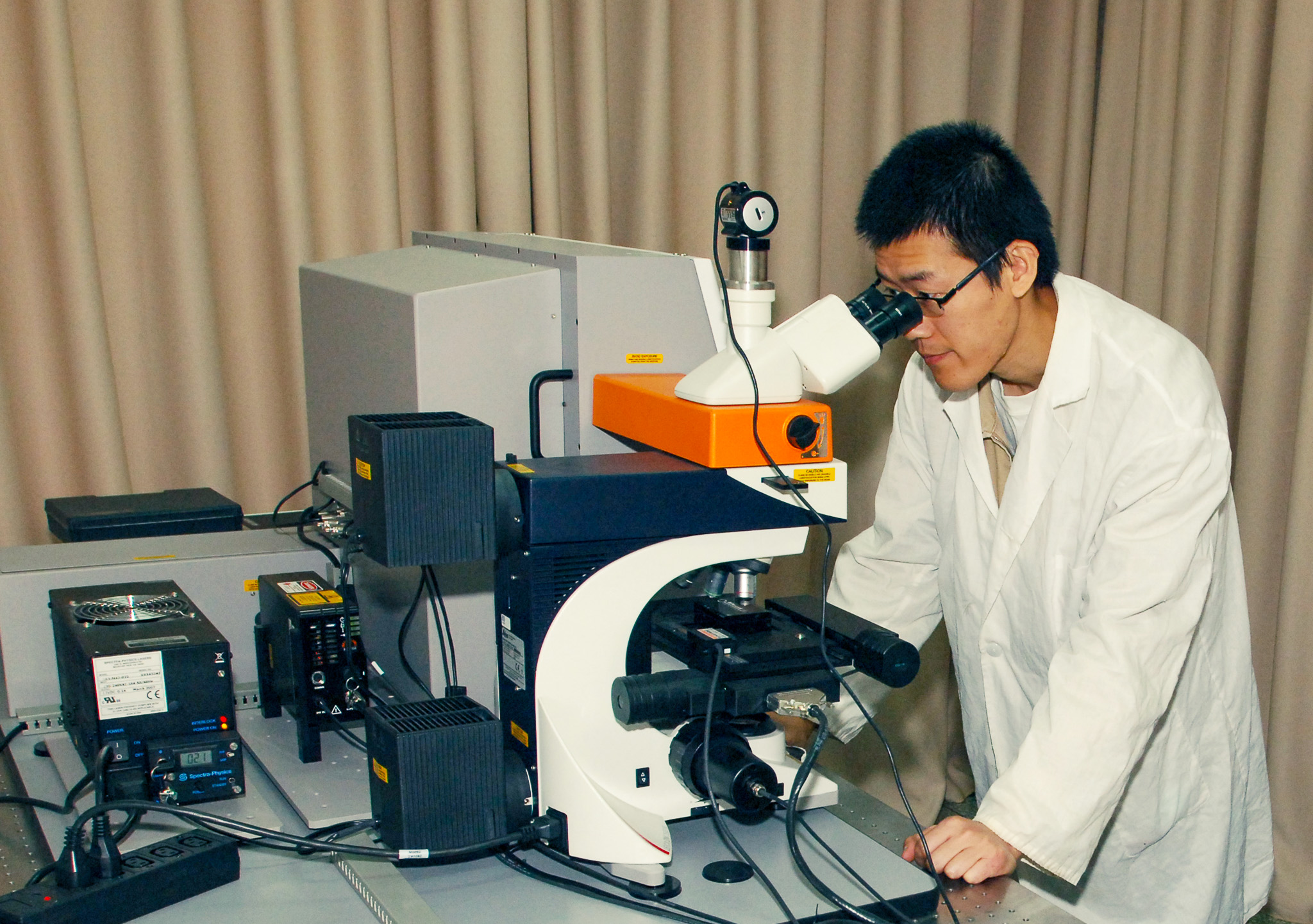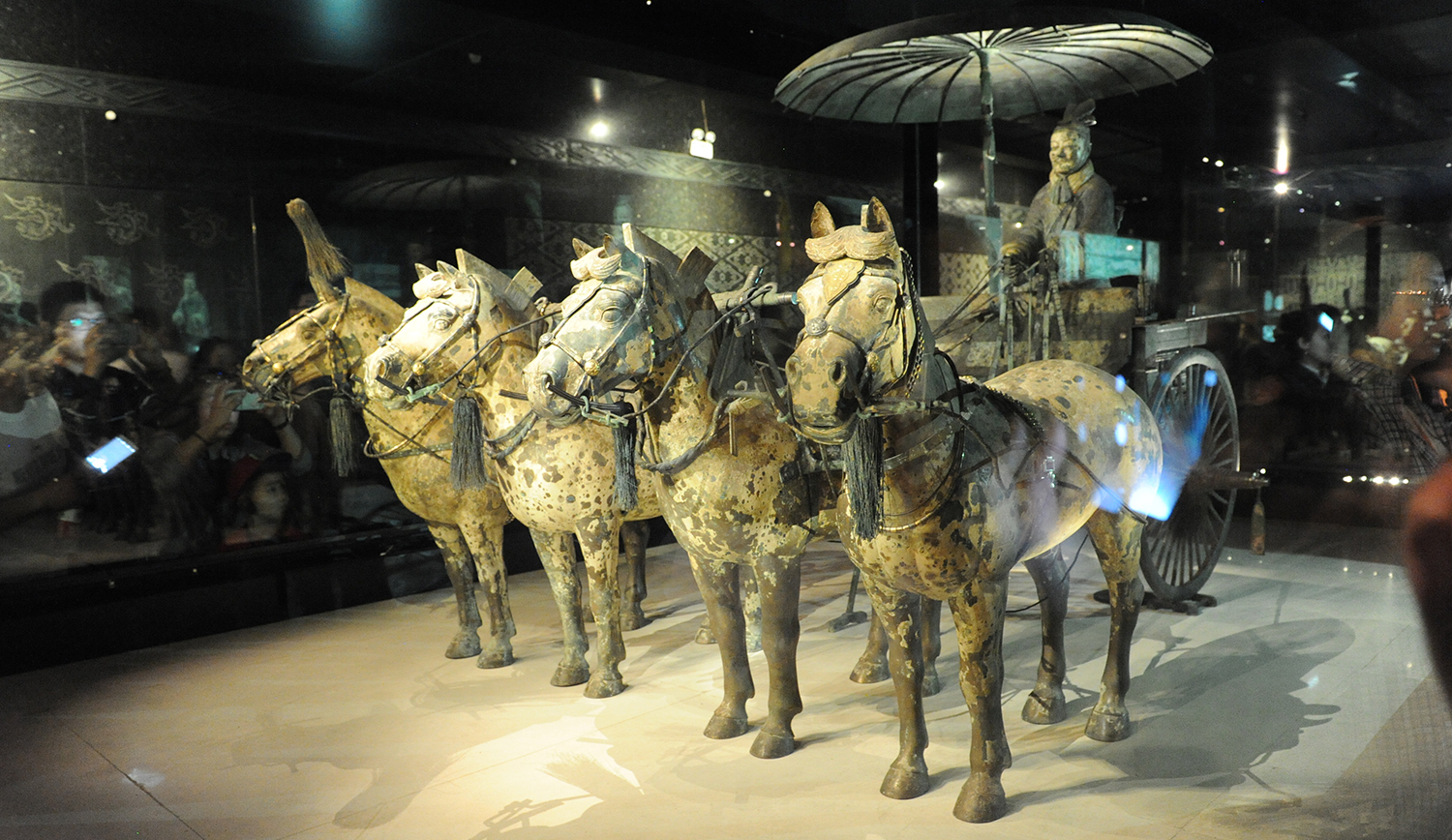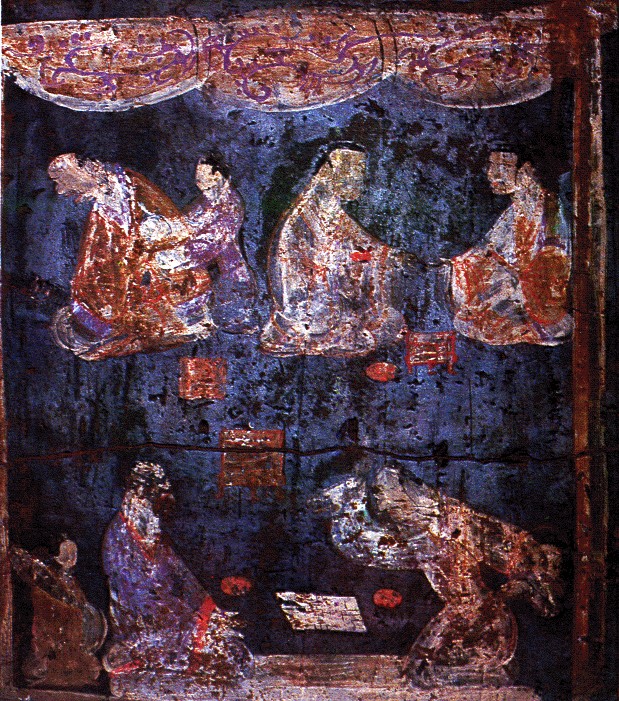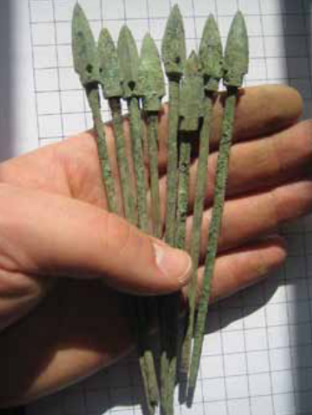50 years since the discovery of the Qin Terracotta Warriors
The Qin Terracotta Warriors and Horses were discovered in 1974. The site consists of three pits containing approximately 8,000 terracotta warriors and horses, as well as over 100 chariots. Covering an area over 20,000 square metres, the pits are part of Emperor Qin Shihuang's mausoleum, the largest imperial tomb in China. The site is located in Lintong District, Xi'an, Shaanxi Province, China and is in the care of the Emperor Qin Shihuang's Mausoleum Site Museum.
Each life-sized figure is uniquely detailed, including distinct facial expressions and costumes. Originally, the Terracotta Warriors were painted in bright pigments that have since faded. Only small traces of pigment can be found on their faces, hands, costumes and shoes. The study and conservation of these precious cultural relics is incredibly complex.
Dr. Yin Xia, the Director of the Relics Conservation and Restoration Department at the Emperor Qin Shihuang's Mausoleum Site Museum, has used an inVia™ confocal Raman microscope to help identify pigments on the terracotta figures for their conservation and restoration. To commemorate 50 years since the discovery of the Qin Terracotta Warriors, we asked Dr Xia to share some his insights into the conservation of these ancient relics.

Question: It has been 50 years since the Terracotta Warriors and Horses were discovered in 1974. How has scientific analysis helped with what we have learned so far?
Dr. Xia: Just as medical doctors care for human patients, conservation scientists treat the decay of cultural relics. Historical artefacts are our patients, and our duty is to conserve these relics for as long as possible. Just as various hospital departments treat different diseases, we use different scientific instruments to study the decay of cultural relics. Then, we can formulate the right conservation and restoration measures.
Although the Qin Terracotta Warriors and Horses were discovered 50 years ago, the application of scientific analysis methods has only gradually developed. In the 1990s, we used the laboratories of domestic and international research institutes to analyse these cultural relics. At the start of this century, the Emperor Qin Shihuang's Mausoleum Site Museum built its own laboratory starting with optical microscopes. In 2008, we introduced larger instruments including Raman spectrometers, scanning electron microscopes with energy dispersive spectroscopy (SEM-EDS), infrared (IR) spectrometers, ion chromatography systems, X-ray fluorescence (XRF) spectrometers and X-ray flaw detectors.
The introduction of different analytical techniques has helped our understanding of decay mechanisms in cultural relics. Our understanding has progressed from qualitative to quantitative, from macro to micro, from routine measurements to in-depth research. Scientific data has a guiding role in the development of targeted conservation and restoration measures. Scientific analysis has also become a powerful means to explore the ancient human lives behind the cultural relics. This teaches us about historical production methods, economics, military organisation, scientific breakthroughs and technological advances.

Bronze carriage unearthed from the Mausoleum of Emperor Qin Shihuang, Xi'an city, Shaanxi Province, China.
Question: You have been involved with the Emperor Qin Shihuang's Mausoleum Site Museum for over a decade. What are the highlights of your time here?
Dr. Xia: In the past 50 years, one of the most important scientific discoveries, is the detection of the artificial pigment Chinese purple, as painted on the Qin Terracotta Warriors. Copper barium silicate was discovered in purple pigment. Copper barium silicate is also found as reaction products in other synthetic pigments such as Chinese blue and Chinese dark blue. This discovery is of great significance for exploring the artificial synthesis of Chinese purple.
At the same time, the nationwide use of Chinese purple helps our understanding of historical developments during the Qin dynasty. In addition, this discovery has great significance for the scientific analysis of bronze weapons and our understanding of metallurgical processes of the time. It also impacts our knowledge of organized engineering used in the construction of the Qin Tombs.
Question: Chemical and structural analysis of the artifacts from the Terracotta Warriors and Horses site has given us clues about life, technology and society in ancient China. Please would you share your most fascinating stories?
Dr. Xia: In the analysis of the Terracotta Warriors and Horses, we can indeed get a lot of clues about ancient Chinese life, society, science and technology. Here are a few interesting cases:
Case 1: Barium copper silicate – Chinese purple pigment
Copper barium silicate (BaCuSi2O6) is a crystalline pigment that has not been observed in nature, but is among several pigments found on the Terracotta Army. Chinese purple is the most representative form of copper barium silicate. It is synthesized by combining natural minerals such as azurite or malachite (containing Cu), barite or witherite (containing Ba), quartz (containing silicic acid) and lead white (as a flux or catalyst). On heating, a chemical reaction occurs at temperatures of about 1,000 ˚C. The resulting pigment is artificially prepared, and there is no natural analogue. These synthetic pigments are the invention of the Qin people.
The earliest cultural relics containing Chinese Purple were excavated in the area of Longdong (eastern Gansu Province), which is an area inhabited by the early Qin people. A large number of Chinese Purple relics were found in the Guanzhong area of Shaanxi, corresponding to the period before and after the Qin unified China. This pigment was also present during a later period in Yulin, Shaanxi, which was connected by the Qin straight road. In addition to pottery and Qin figurine paintings, copper barium silicate pigments were also used in faience, polychrome decorations on stone or bronze and murals on walls.

Chinese Blue and Purple pigments are used in a mural from an Eastern Han tomb near Luoyang, Henan, China.
In modern laboratories, we use different reactant ratios and temperatures to prepare different proportions of copper barium silicate. Even with the use of a modern muffle furnace offering highly precise temperature control, it is very difficult to prepare copper barium silicate. As you can imagine, Chinese Blue and Purple are remarkable as great inventions dating back more than 2,000 years ago.
Case 2: Hydroxyapatite or bone white pigment:
In ancient Chinese pigments, the use of bone white pigment is also very rare. It is only found in archaeological sites such as the Qin Warrior Pit and the Qin Xianyang City Ruins. Although the same composition of hydroxyapatite occurs in nature, we can detect bone white pigment using Polarised Light Microscopy, Raman spectroscopy and scanning electron microscopy. Bone white pigment is synthesized by burning animal bones and then grinding them into powder. Optically, the refractive index of bone white pigment is low compared with lead white. Thus, bone white is not a pigment with excellent performance. It therefore remains a mystery why the Qin people used bone white as a pigment on a large scale.
Case 3: Sand in the Qin Warrior Pottery
A large amount of quartz from river sand can be seen in the Qin Warrior pottery tube. Did the original clay itself contain a large amount of quartz, or was it consciously added?
Case 4: Processing and manufacturing of bronze weapons of the Qin Warriors
Many bronze weapons used in actual combat during the Qin Dynasty were unearthed in the Qin Terracotta Warriors pit. These include long weapons (spears, halberds and lances), short weapons (swords and hooks) and long-distance weapons (crossbows, bows, arrowheads). Our analysis of the bronze weapons shows that all weapons were repeatedly polished using mechanical devices.
A quiver carried by a soldier would have contained up to hundreds of arrowheads. The arrows a single quiver were detected to have similar alloy composition ratios. This indicates that after the bronze arrowheads were made by crucible smelting, they were placed directly in the quiver and were not redistributed. Although these arrows were not found on a battlefield, their specifications and quality were exactly the same as those used in actual combat at that time.

A handful of the 40,000 bronze arrows so far recovered from the Terracotta Army. Photo credit: Dr Yin Xia.
Case 5: Chromium was detected on the surface of some bronze weapons
The presence of chromium was previously thought to be intentional to prevent rust on bronze weapons. However, recent studies believe that it is caused by chromium salt contamination in lacquer, which has not yet been clarified.
Question: How has Raman spectroscopy helped with understanding the artefacts here?
Dr. Xia: Since 2008, the Qinling Museum in China has been introducing large-scale analytical instruments. The two main considerations are:
• The value and rarity of cultural relics, so that the sampled amount is as small as possible.
• The ease-of-use and minimal maintenance of the instrument.
In our daily analysis work, we first use a polarizing microscope to determine the composition of a cultural relic. If further analysis is needed, Raman analysis is carried out. Next, SEM-EDS is carried out.
With Raman spectroscopy, the firing temperature of glass and glazed layers can be determined. At the same time, devitrification analysis of such artefacts can help us to understand their aging and even estimate their burial age.
Question: What questions are researchers trying to answer about the Terracotta Warriors and Horses today?
Dr. Xia: Currently, we are trying to solve these research problems:
- What kind of animal bones were used for the bone-white pigment on the painted Qin figurines?
- What is the reason and origin of chromium in the lacquered surface layer of the painted Qin figurines?
- During the Qin Dynasty, the synthesis by-products of Chinese purple are Chinese blue and Chinese dark blue. Theoretically, another copper barium silicate is yet to be discovered.
- A convenient analysis method for Raman and polarization identification of patina.
Thank you Dr Xia for sharing your research on the Terracotta Warriors
We wish Dr Xia and his colleagues every success in unlocking the secrets of the Qin dynasty and Chinese cultural heritage.
Find out more about the Emperor Qin Shihuang's Mausoleum Site Museum.
Learn how Raman microscopy is applied to cultural heritage studies.
Further reading:
1. Development of Chinese barium copper silicate pigments during the Qin Empire based on Raman and polarized light microscopy studies
Y. Xia, Q. Ma, Z. Zhang, Z. Liu, J. Feng, A. Shao, W. Wang, Q. Fu, J. Archaeol. Sci., 2014, 49, 500-509.
2. A colourful world for the Emperor's soul: The polychromy of the terracotta sculptures at Qin Shihuang's burial complex
Blänsdorf, C, Y. Xia, Stud. Conserv., 2006, 51, 177183.
3. Ink marks, bronze crossbows and their implications for the Qin Terracotta Army
A. Bevan, X. Li, Z. Zhao, J. Huang, S. Laidlaw, N. Xi, Y. Xia, S. Ma and M. Martinon-Torres, Herit. Sci., 2018, 6,75.
4. Smalt: An under-recognized pigment commonly used in historical period
Y. Xia, N. Xi, J. Huang, N. Wang, Y. Lei, Q. Fu, W. Wang, China, J. Archaeol. Sci., 2019, 101, 89-98.